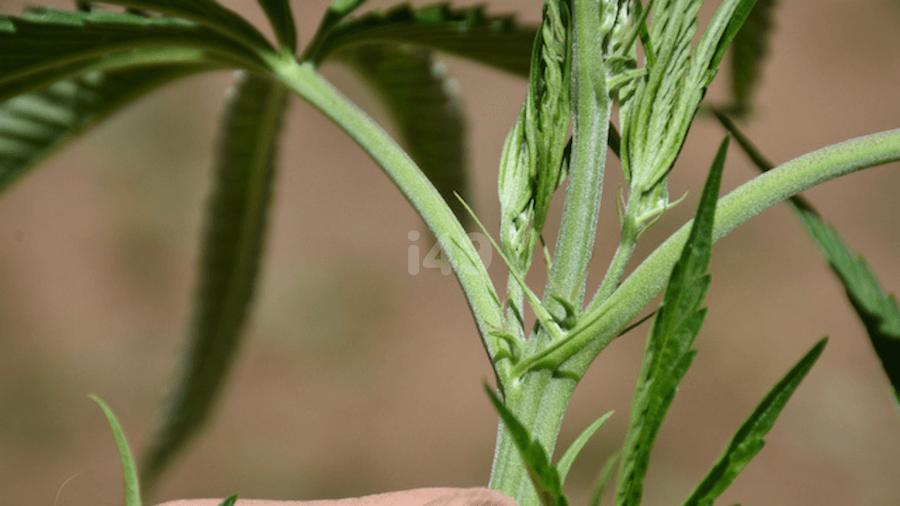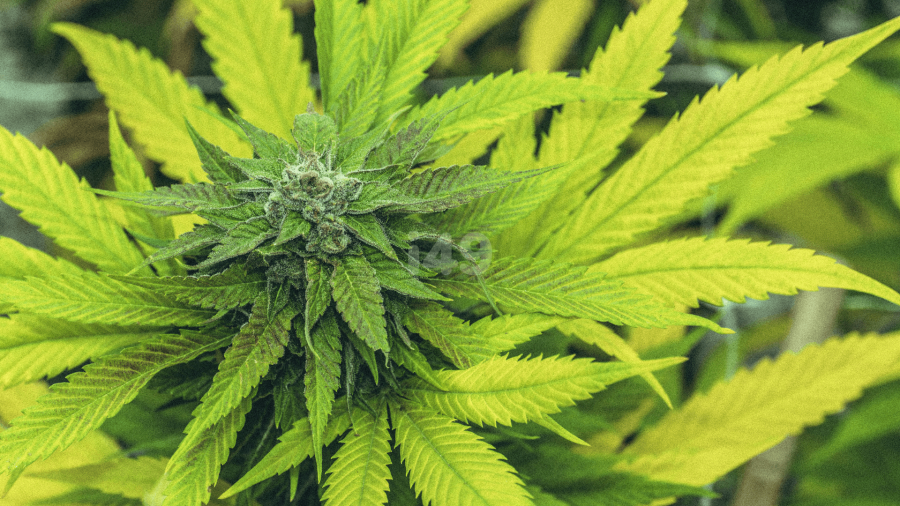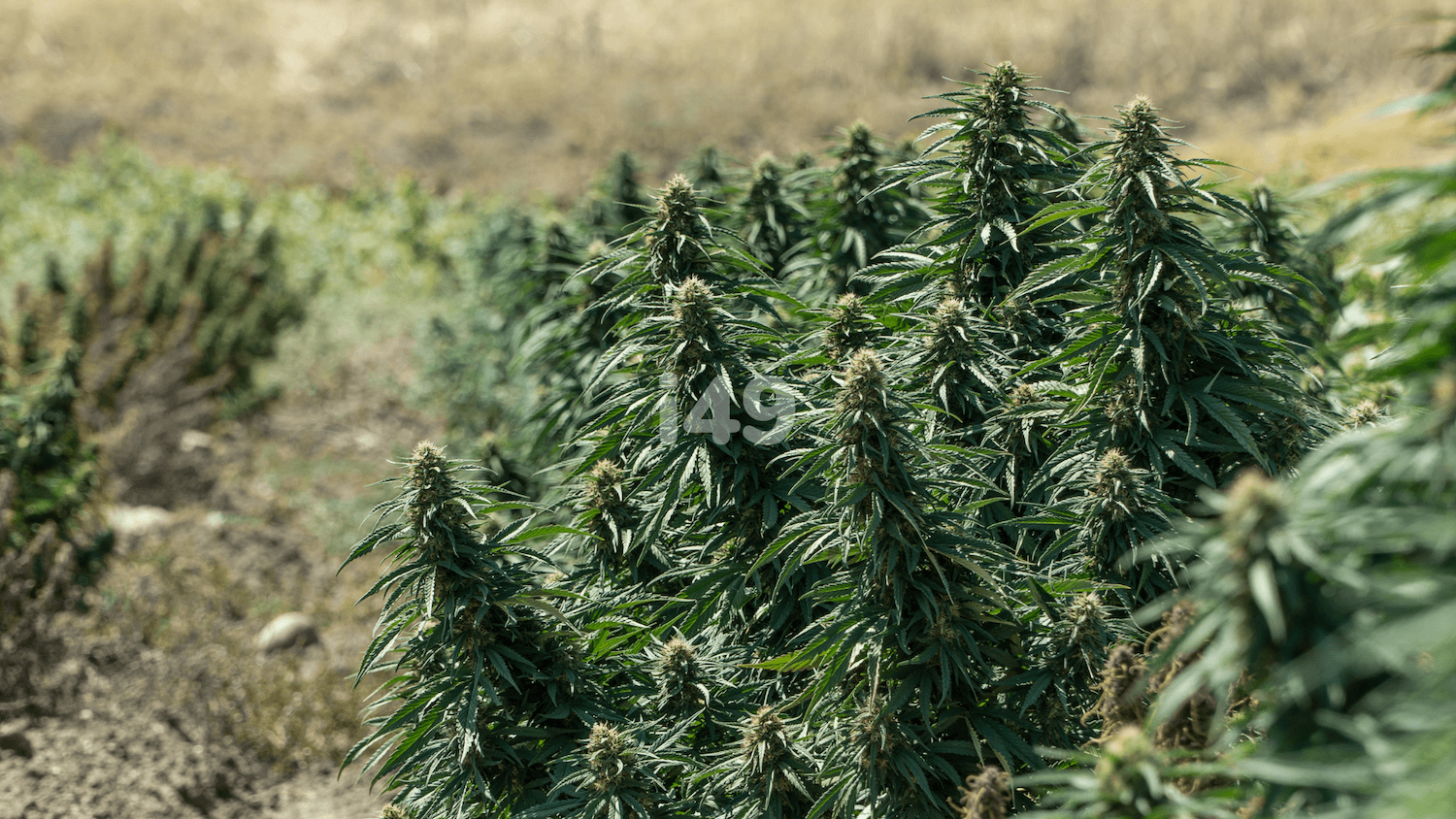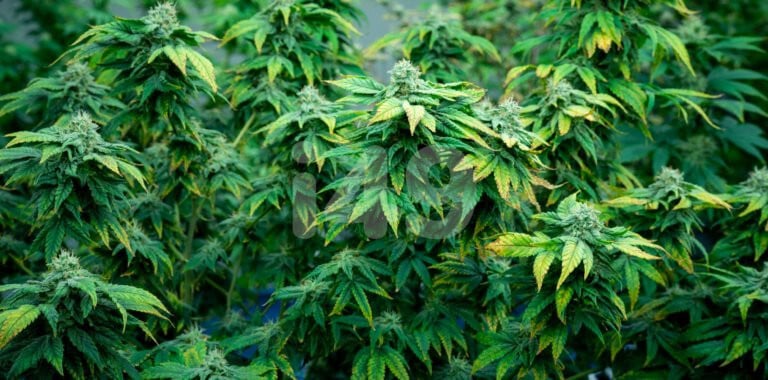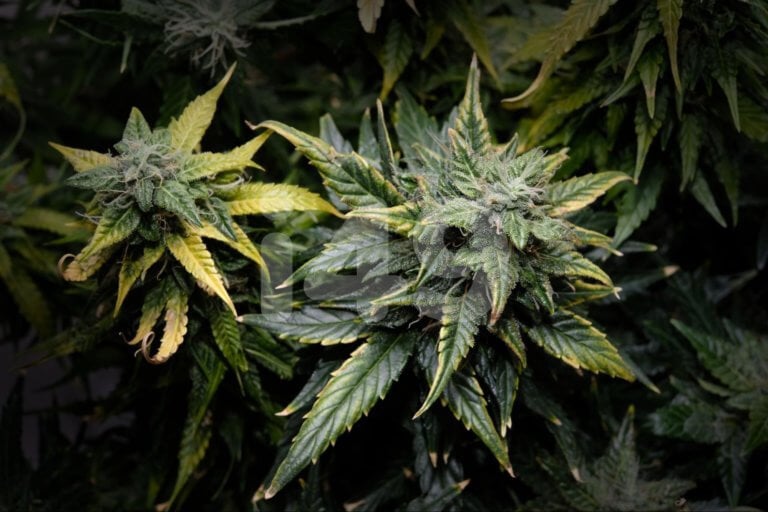Copper (Cu) is one of the essential micronutrients in marijuana plants. Inadequate levels of this element can lead to a copper deficiency in cannabis which may harm the crop.
This shortage affects cell formation, respiration, metabolism, and enzyme production. Copper also plays a crucial role in photosynthesis. If a weed plant has low levels of this mineral, it lacks the energy required for growth and flowering.
How do you maintain the proper amounts of copper? Read on to learn how to identify the signs of a Cu deficiency in cannabis plants and how to correct it.
Let’s begin.
Symptoms of a copper deficiency in cannabis plants
Copper deficiency symptoms in cannabis vary between different strains. The common signals to look out for include:

Leaves with dark blue or purple spots
Copper is necessary for chlorophyll formation. A lack of this element starts to show in the leaves, either on the whole surface or between the veins.

These areas indicate less chlorophyll. Necrotic spots or markings may form, causing the leaves to have dark blue or purple hues.

Note that the shortage in copper may mimic a manganese or magnesium deficiency in weed. When a plant has low Mg levels, the interveinal pattern of chlorosis is more widespread. The entire crop may have brown or dark leaves.
Brown or yellow leaf tips or edges
As the leaf symptoms progress, the tips and edges turn yellow while the remaining parts stay dark blue or purple.
The leaf tips affected by a cannabis copper deficiency shouldn’t be confused with nutrient burn. This issue causes slightly yellow ends or tips with bronze or brown patches that become crumbly.

Leaves may feel stiff and start withering
The new foliage is smaller and curlier, indicating the presence of a phenomenon called cannabis copper deficiency cupping. The shiny or smooth leaves are the mature ones at the top, and they sometimes become stiff or wilt.

Buds grow very slowly or don’t ripen
Some strains are prone to a copper deficiency during the flowering stage. You may notice colors like pink or purple on the leaves. These plants struggle to photosynthesize and can’t provide enough energy for the buds to mature.
How to fix a copper deficiency in cannabis plants
Like other cannabis nutrient deficiencies, inadequate Cu levels can cause several problems in the plant’s functioning. For a bountiful harvest, you should reverse the shortage immediately.
Here are some tips on how to fix a cannabis copper deficiency:
Maintain the correct pH range
The quickest treatment involves testing the pH in the soil and, if necessary, adjusting it to the correct levels. Copper uptake is hindered if the growing medium is too acidic (0.0–6.9) or alkaline (7.0–14).
Cu in soil becomes most absorbent at pH 6.0–6.5, though the plants take in adequate amounts at around 7.0. If you’re growing in hydroponics, the ideal pH range is about 5.5–6.5.
Provide the right nutrients
Feeding your plants with good nutrients may help correct a copper deficiency in cannabis.
Opt for a comprehensive micronutrient solution to give your crop a healthy dose of Cu and other minerals. A quality fertilizer specially designed for marijuana cultivation should also do the trick.
Since copper is immobile, it doesn’t move through the plant efficiently, so older yellow leaves might not become green again. However, new foliage will be healthy after a few days.
Keep plants hydrated with high-quality water
Marijuana crops are sensitive to the minerals in H2O, so you should familiarize yourself with the best water for cannabis plants. Tap liquid is recommended for copper deficient plants as it has more Cu than filtered water.
Another remedy to fix a copper deficiency in marijuana is to soak Cu coins in water and spray the liquid on the affected crop. Using pH-balanced H2O can also minimize the risk of a copper shortage.
Take good care of the roots
Cannabis crops need strong, healthy roots to grow. Although copper is present in sufficient amounts to support plant functions, the radicles may fail to absorb it.
Avoid overwatering as it can lead to root problems like rot. Digging too close to your plants may disrupt development and limit their ability to absorb copper.
Сauses of a copper deficiency in cannabis and how to prevent it
Apart from high and low pH levels, other factors can also induce a copper deficiency in weed plants. They include:
High organic matter
Copper tends to bind easily to organic matter, reducing its availability to plants. Ensure any natural items in the soil are sufficiently decomposed to release the copper and prepare it for plant consumption.
Presence of other elements
Other micronutrients in the soil, such as iron, manganese, and aluminum, can suppress Cu and prevent it from being absorbed by the crops.
To avert a copper deficiency caused by excess elements, maintain an optimal ratio of minerals. This aspect allows the roots to suck in all nutrients equally.
Diseases
Bacteria, viruses, fungi, and other pathogens are always present in the soil. Harmful microorganisms may find their way to your precious crops, causing diseases that inhibit plants from absorbing copper.
Use mineral-rich pesticides to fight infections. These solutions contain trace amounts of nutrients to prevent a copper deficiency in cannabis plants.
Unfavorable climate
Your growing environment can reduce the plant’s ability to absorb copper. Ensure your crops have the proper humidity, temperature, and carbon dioxide levels.
Unlock the right balance of nutrients
When resolving a copper deficiency in cannabis, balance is key. Be careful of providing too much of this mineral and inducing a shortage of other nutrients.
Learning how to diagnose and resolve common cannabis nutrient deficiencies is a vital part of growing marijuana. It allows you to identify when one nutrient is off-balance and helps you fix the plant symptoms before they become major problems.
Once you understand the different types of deficiencies, it’s time to start the growing process by acquiring high yield seeds from i49. Our seed bank has a wide range of strains with premium genetics.



